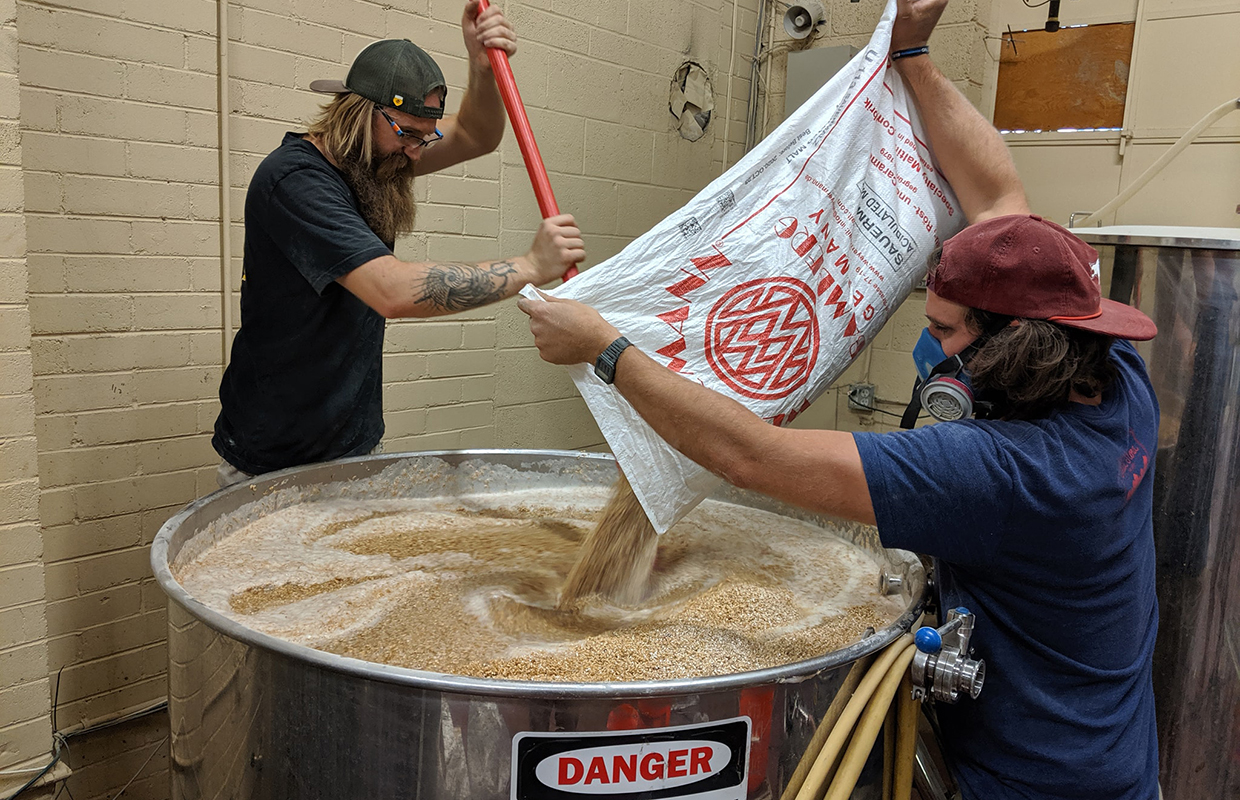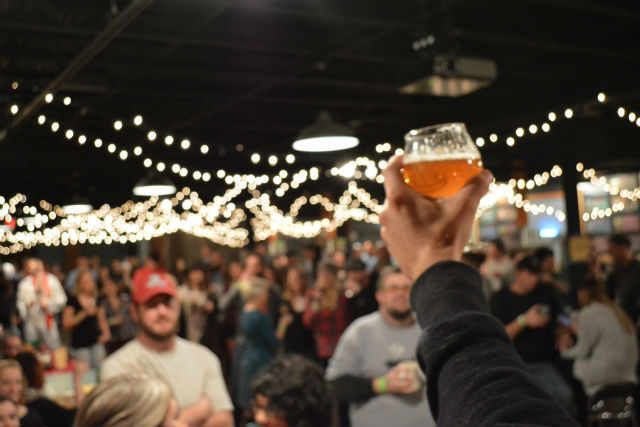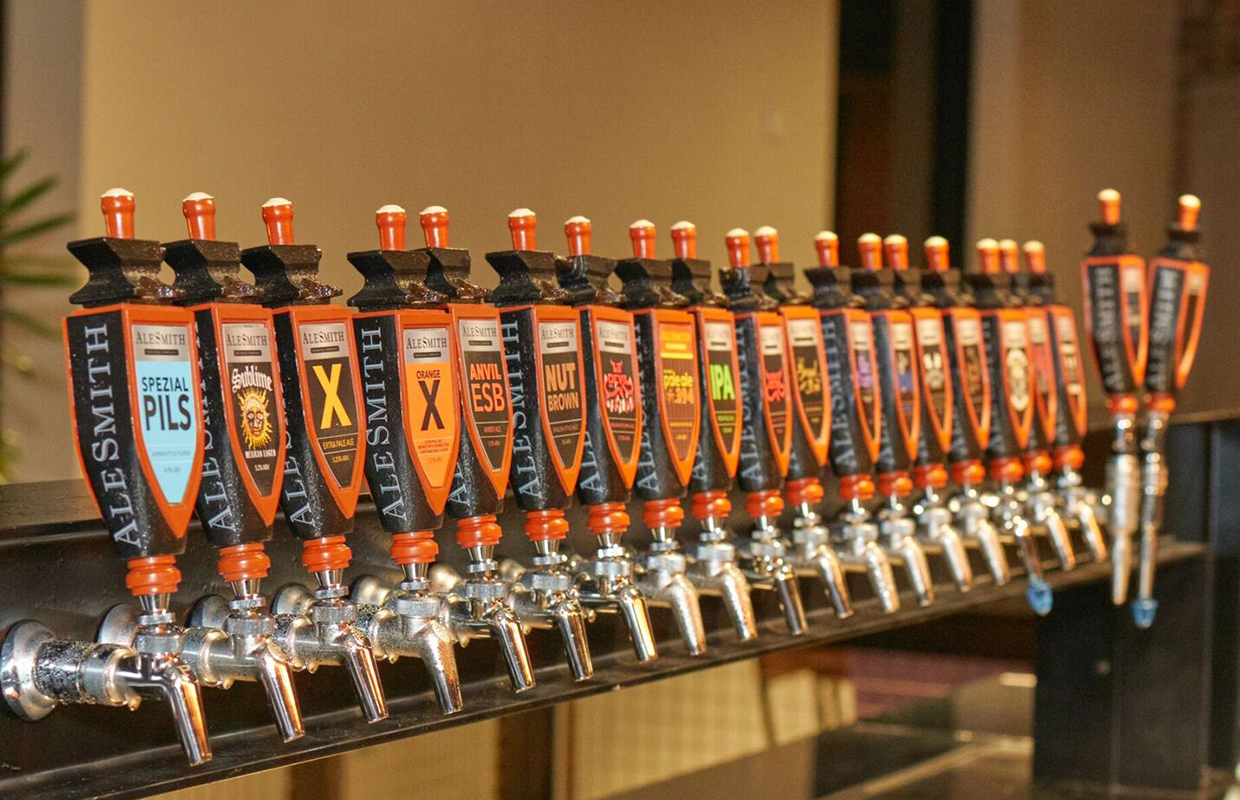
With now four locations — and four brewhouses — Pinthouse owner Ryan Van Biene and his staff have had to mull over the decisions and weigh the pros and cons of different types of brewing systems over the years. Starting with a seven-barrel direct-fire setup upon opening, in February, the Austin, Texas-based brewpub added a four-vessel, 15-barrel steam-jacketed system to its newest location in Round Rock, Texas.
“From the start to kind of where we are now, [decision-making] was all very measured risks,” he said. “It really had to do with control and what risks we’re willing to take.”
The switch to a steam-jacketed system for the fourth brewhouse happened only after dialing in the brewery’s recipes on a 15-barrel direct-fire system at the third location.
The benefits to having direct fire is really a space-saving measure, Van Biene said.
“In a smaller building and smaller footprint, we don’t have to deal with the boiler and boiler piping and return condensate and all the other process piping and things that go into having a boiler, so all you gotta do is get a gas line there and hook ‘er up,” he said. “So it’s significantly easier for a tight space and our Burnett location — our original location — the brewing area is only about 800 square feet. Really small.“
Once Pinthouse was able to adjust to a larger system by re-creating the seven-barrel batches on the 15-barrel direct-fire system, the move to steam made sense.
Typically, the heat source choice and design for a brewhouse is impacted by size, scale, and of course, other utilities available.
Electric or direct fire is often appropriate for small systems such as pubs or pilot breweries as they tend to require less support utilities and are self-contained, explained representatives from The Bruery.
“However, these systems are less efficient and typically more expensive to operate, making them prohibitive for large-scale operation,” they noted.
A steam-supplied system, whether a jacketed or recirculated design, offers better heat transfer and gentle handling of wort.
“Having that direct fire underneath the kettle can be really harsh,” Van Biene said about Pinthouse’s switch to steam with the newest system. “You can add some caramelization and some color to your product. That isn’t necessarily a bad thing, but if we’re trying to get better — which we always are — and improve our product and continue to push what we can do, a steam-jacketed system is kind of the next logical step.”
However, there is caution that these systems do require the utility infrastructure of steam supply which in most cases is a boiler plant in the brewery.
“Some municipalities offer city steam which can also be utilized,” The Bruery told Brewer. “In other cases, breweries that are unable to generate steam due to local codes or building limitations could turn to direct fire systems instead.”
READ MORE: These Maintenance Checks Could Save Money, Downtime in Brewhouse
Now, if he had to do it again, Matthew Fuerst would not choose to go with an electric brewing system. The founder of Grandma’s House said the predominant factor that led to the Denver-area brewery to go with an electric system was that it was in a building that already had 3-phase electric and did not require any electrical upgrades.
“There were certainly other factors, such as it being more economical (due to the lack of need for upgrades) for us than steam, and safer, quieter, and no issues with scorching compared to direct fire,” Fuerst said. “We worked with a consultant pre-construction, and they led us to believe that the energy costs would be similar to natural gas.
“They were apparently unaware that the huge spikes in electric use when we brew result in the utility company charging us a higher rate for all of our electric use, resulting in us paying approximately 150% compared to a similarly-sized brewery running on natural gas.”
So is size and production level an indicator of what type of system is best? Most likely, yes.
The benefit for most breweries that are producing at a larger-than-pub scale is that steam is utilized in other applications as well, such as cleaning, heating CIP solution, and sterilizing kegs.
“So the boiler plant is serving more than the brewhouse,” The Bruery production team said in an email, adding that steam-heated systems are ideal for brewhouses of 25-barrel capacity and up as they are more efficient and offer more consistency.
Pinthouse was able to crank out 3,400 barrels on a seven-barrel system at its South Lamar location, which Van Biene admits shows the workhorse ability and low maintenance needed to keep a direct-fire system running properly.
“It’s a blower, and that’s about it,” he said. “It’s either firing or it’s not. And if it’s not firing, then there is a little electrical issue.”
There’s some regular preventative maintenance that Pinthouse will do, but some are tied to the humidity that Texas can have.
“If you’re not getting a good draft or pull sometimes it can stall out,” he said. “We’ll run into problems with the burner actually firing sometimes, depending on what the temperature’s atmospheric pressure is like. But outside of that, they’re pretty darn easy. They pretty much just run. And they’re very predictable.”
One plus that Fuerst said is that having an electric system did require much less venting. But energy use is the predominant factor for any brewery owner looking to use an electric system to take into account.
“It is fairly uncommon to see seven-barrel or larger systems running on electricity, and I now understand why,” Fuerst said. “I am not sure whether smaller systems running on electric would have large enough spikes in electric use to prompt the electric company to increase their price per unit, but it is certainly something to investigate before deciding on electric.”
Grandma’s House has floating safety mechanisms to ensure that the heating elements don’t turn on when they are not submerged.
“I know some smaller systems don’t, and I’ve heard that can result in scorched elements that need to be replaced,” Fuerst pointed out, adding that for cleaning and maintenance, the elements also need to be removed occasionally and soaked/scrubbed, as CIP doesn’t always remove all buildup.
Although a newer user of steam, Van Biene did share in his experiences for the first six months.
“We are doing water maintenance twice a month and checking the chemical makeup,” he said and the utilities are trending higher for the boiler than expected.
“So we’re not really gaining any efficiencies there,” he said. He added that the process piping coming in and out of the brewhouse — valves, check valves, and return condensate pumps — that there is a lot more to maintain and a lot more to make sure it’s in good working condition.
“I would say other than the fact that it can produce a better product on a small system, it’s definitely more efficient in terms of how quickly you can get to a boil, and maintain a boil,” Van Biene said. “But I definitely think that on a smaller system, having steam is only going to increase your maintenance costs and operation costs. But there’s definitely efficiency gained as you get larger.”
Photo courtesy Grandma’s House Brewing






Be the first to comment